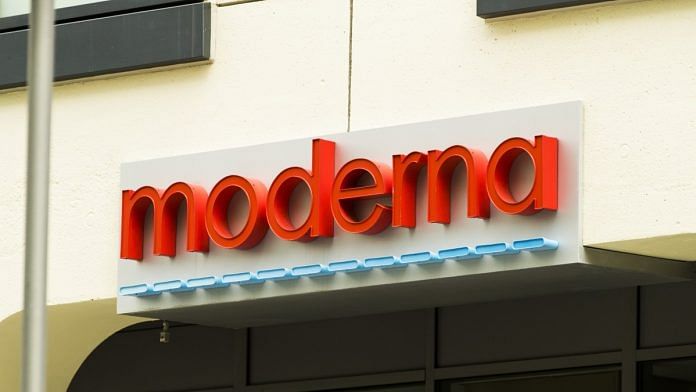Washington: Now it’s Moderna Inc.’s time to be in the spotlight.
The same U.S. explosion of Covid-19 cases that helped Pfizer Inc. get results for its vaccine trial earlier this week is helping speed along Moderna’s trial. Moderna said Wednesday its study has accumulated more than 53 infections, allowing a preliminary analysis of the shot’s effectiveness to begin. The shares jumped.
Moderna didn’t predict how long it could take an independent monitoring committee to analyze the data, but said the company could get the data to the committee within days. The company said it is still blinded to the data.
“Moderna has seen a significant increase in the rate of case identification across sites in the last week,” the company said in a statement. “As a result, the company expects the first interim analysis will include substantially more than 53 cases, the targeted trigger point for the analysis.”
The preliminary data on Moderna’s study is being prepared for submission to the monitoring board, Moderna said. The board will say whether the vaccine is effective, doesn’t work, or that the trial should continue because the results are inconclusive.
The bet among top experts in the field is that Moderna’s therapy, which uses a similar mRNA technology to Pfizer’s, will likely prove to be highly effective, perhaps mirroring Pfizer’s announcement earlier this week that its shot appears to be more than 90% effective.
“Overall I would expect similar results” in Moderna’s trial, said Drew Weissman, an immunologist and mRNA expert at the University of Pennsylvania who helped develop key modifications used in mRNA vaccines.
“It is hard to imagine how it would be much different,” according to Weissman, whose lab receives research funding from BioNTech SE, the company partnering with Pfizer on its vaccine.
Certain numbers
In vaccine trials, a certain number of volunteers — a percentage of which get a placebo — have to get infected in order to determine if the vaccine works. That’s easier to accomplish with the pandemic in the U.S. hitting record infections on a daily basis.
Pfizer got a burst of results in recent weeks that pushed that trial over the line to take a first look. Now Moderna’s interim analysis could come within days.
Whatever happens in the trial — and there are no guarantees until it is done — the results are certain to have a big impact on Moderna shares, which are up more than 300% this year in a wild roller-coaster ride. The stock closed up 8.4% in New York trading at $82.44.
A preliminary analysis in Moderna’s trial would likely have already been available if the shot was only 60% effective, according to the research firm Airfinity Ltd. If the Moderna vaccine turns out to be 90% effective, however, that time line would be expanded and Moderna would be getting results around now, Airfinity said.
The more effective a vaccine is, the longer it takes for cases to add up since there would be fewer infections in the half of participants who got the vaccine rather than a placebo.
The strong similarity with the successful Pfizer vaccine is boosting confidence in Moderna’s, which was developed in concert with the U.S. National Institute of Allergy and Infectious Diseases.
The Pfizer result “validates the mRNA platform,” said Anthony Fauci, director of the NIAID and the U.S. government’s top infectious disease doctor, in a call with reporters Monday. “Moderna is an mRNA candidate, which we would expect to have similar results.”
Dose differences
Moderna’s final-stage trial started on the same day as Pfizer’s big trial in late July. The company is slightly behind Pfizer largely due to structural differences in the trials. The two doses of Moderna’s vaccine are given four weeks apart, instead of the three-week gap used in for Pfizer’s vaccine.
In addition, Moderna doesn’t start counting coronavirus cases until 14 days after the second vaccine dose, as opposed to 7 days after the second dose in the Pfizer trial. Pfizer’s trial also has more participants.
Pfizer originally planned to analyze its results after a mere 32 cases had occurred, but the plan to peek at the results so early on was controversial among medical experts. The drugmaker agreed with the U.S. Food and Drug Administration to wait until 62 cases occurred in its trial before starting to analyze the results. By the time it began crunching the data, though, a total of 94 cases had come in. – Bloomberg
Also read: With Pfizer winning race to prove efficacy, what happens to other Covid vaccines






